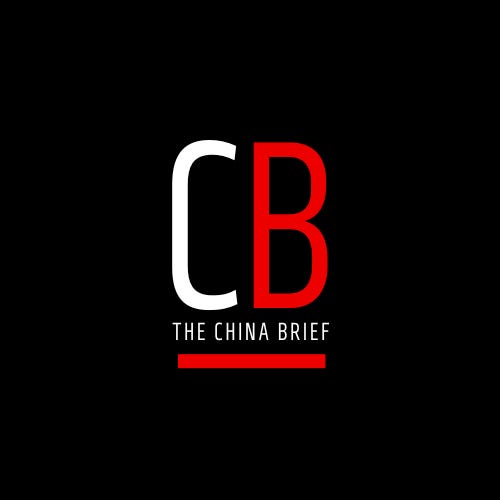- Arvind's Newsletter
- Posts
- Arvind's Newsletter- Weekend edition
Arvind's Newsletter- Weekend edition
Issue No #837
1.Two 20-year-olds beat grim market to mint India’s newest unicorn
Zepto, an instant grocery startup founded by a duo of Stanford dropouts, both 20, raised fresh funds at a $1.4 billion valuation, creating a rare Indian unicorn among gloomy venture capital environment.
Zepto, founded only three years ago by Aadit Palicha and Kaivalya Vohra, announced that it has raised $200 million in a Series E funding round at a valuation of $1.4 billion. In doing so, it has become India’s first unicorn of 2023, defying the global funding downturn that has seen rivals such as Bengaluru-based Dunzo fighting for survival.
The company’s progress over the past year has been impressive. At a time when growth-chasing startups have lost their sheen, with investors prioritising profitability instead, Zepto has made massive strides towards building a sustainable business while not taking its foot off the growth pedal.
2.Chandrayaan-3 Makes Historic Touchdown on the Moon
Jatan Mehta’s long read analyses ISRO’s Chadrayaan-3 success in the Scientific American. It is a great weekend read.
India has become the fourth nation to successfully land a spacecraft on the moon with the triumphant August 23 touchdown of its Chandrayaan-3 mission.
After its previous lunar lander crashed in 2019, India's space agency ISRO made major improvements to Chandrayaan-3's guidance, navigation and control systems to ensure a safe landing. The enhancements included more onboard fuel, redundant sensors like a microwave altimeter, and faster navigation software to quickly correct deviations. Chandrayaan-3 autonomously descended to the lunar surface over four phases, avoiding hazards to touch down smoothly in the target zone near the south pole.
This success wasn’t a given, especially when considering that four out of the previous six lunar landing attempts within the past five years have failed.Thankfully, at least Chandrayaan-3’s outcome has instead followed those of China’s Chang’e 4 and Chang’e 5 landers, the only other recent successes.
3.Scientists investigating so-called bacterial “dark matter” think they have found hints of a new class of antibiotic that could help fight antimicrobial resistance.
Most of the world’s bacterial species cannot be lab-grown, and therefore investigated, the Financial Times’s Anjana Ahuja reported: They are compared to the unknown “dark matter” that makes up much of the physical universe. But new methods are arising, and scientists found one microbe which produces a compound which attacks other bacteria in three different ways, making it harder to resist.
Lab tests show it can kill drug-resistant microbes although human trials are years away. Antimicrobial resistance is believed to kill 1.2 million people a year, a number that is likely to rise as resistance grows, and new antibiotics are increasingly rare.
4.Social media is evolving and the biggest social media platforms all have their niches.
Instagram is for showing off the best of your 500 selfies. Facebook is for learning too much about an acquaintance from college. And LinkedIn is for updating the obligatory professional profile when you’re looking for a job, then receiving constant emails prompting you to congratulate someone on their “work anniversary.” Or at least that’s how it used to be. As other networks stagnate, shift their algorithms or in one particular case burn themselves to the ground, LinkedIn is becoming a site where regular people actually want to hang out and post their thoughts. It might even be cool.
5.Western media seems to have turned in its views on China. The Economist opines, “Why China’s Economy can’t be fixed” . The Wall Street Journal, not be left behind writes, “China’s 40 year boom is over. What next?”
Many have earlier forecast China’s economic doom earlier. Readers can read excerpts from both articles and form their own views.
“After China rejoined the world economy in 1978, it became the most spectacular growth story in history. Farm reform, industrialisation and rising incomes lifted nearly 800m people out of extreme poverty. Having produced just a tenth as much as America in 1980, China’s economy is now about three-quarters the size. Yet instead of roaring back after the government abandoned its “zero-covid” policy at the end of 2022, it is lurching from one ditch to the next.”
“The economy grew at an annualised rate of just 3.2% in the second quarter, a disappointment that looks even worse given that, by one prominent estimate, America’s may be growing at almost 6%. House prices have fallen and property developers, who tend to sell houses before they are built, have hit the wall, scaring off buyers. Consumer spending, business investment and exports have all fallen short. And whereas much of the world battles inflation that is too high, China is suffering from the opposite problem: consumer prices fell in the year to July. Some analysts warn that China may enter a deflationary trap like Japan’s in the 1990s .”
Yet in some ways Japanification is too mild a diagnosis of China’s ills. A chronic shortfall in growth would be worse in China because its people are poorer. Japan’s living standards were about 60% of America’s by 1990; China’s today are less than 20%. And, unlike Japan, China is also suffering from something more profound than weak demand and heavy debt. Many of its challenges stem from broader failures of its economic policymaking—which are getting worse as President Xi Jinping centralises power.
A decade or so ago China’s technocrats were seen almost as savants. First they presided over an economic marvel. Then China was the only big economy to respond to the global financial crisis of 2007-09 with sufficient stimulatory force—some commentators went as far as to say that China had saved the world economy. In the 2010s, every time the economy wobbled, officials defied predictions of calamity by cheapening credit, building infrastructure or stimulating the property market.
During each episode, however, public and private debts mounted. So did doubts about the sustainability of the housing boom and whether new infrastructure was really needed. Today policymakers are in a bind. Wisely, they do not want more white elephants or to reflate the property bubble. Nor can they do enough of the more desirable kinds of stimulus, such as pension spending and handouts to poor households to boost consumption, because Mr Xi has disavowed “welfarism” and the government seeks an official deficit of only 3% of gdp.
As a result, the response to the slowdown has been lacklustre. Policymakers are not even willing to cut interest rates much. On August 21st they disappointed investors with an underwhelming cut of 0.1 percentage points in the one-year lending rate.
This feeble response to tumbling growth and inflation is the latest in a series of policy errors. China’s foreign-policy swagger and its mercantilist industrial policy have aggravated an economic conflict with America. At home it has failed to deal adequately with incentives to speculate on housing and a system in which developers have such huge obligations that they are systemically important. Starting in 2020 regulators tanked markets by cracking down on successful consumer-technology firms that were deemed too unruly and monopolistic. During the pandemic, officials bought time with lockdowns but failed to use it to vaccinate enough people for a controlled exit, and then were overwhelmed by the highly contagious Omicron variant.
Why does the government keep making mistakes? One reason is that short-term growth is no longer the priority of the Chinese Communist Party (CCP). The signs are that Mr Xi believes China must prepare for sustained economic and, potentially, military conflict with America. Today, therefore, he emphasises China’s pursuit of national greatness, security and resilience. He is willing to make material sacrifices to achieve those goals, and to the extent he wants growth, it must be “high quality”.
Yet even by Mr Xi’s criteria, the CCP’s decisions are flawed. The collapse of the zero-covid policy undermined Mr Xi’s prestige. The attack on tech firms has scared off entrepreneurs. Should China fall into persistent deflation because the authorities refuse to boost consumption, debts will rise in real value and weigh more heavily on the economy. Above all, unless the CCP continues to raise living standards, it will weaken its grip on power and limit its ability to match America.
Mounting policy failures therefore look less like a new, self-sacrificing focus on national security, than plain bad decision-making. They have coincided with Mr Xi’s centralisation of power and his replacement of technocrats with loyalists in top jobs. China used to tolerate debate about its economy, but today it cajoles analysts into fake optimism. Recently it has stopped publishing unflattering data on youth unemployment and consumer confidence. The top ranks of government still contain plenty of talent, but it is naive to expect a bureaucracy to produce rational analysis or inventive ideas when the message from the top is that loyalty matters above all. Instead, decisions are increasingly governed by an ideology that fuses a left-wing suspicion of rich entrepreneurs with a right-wing reluctance to hand money to the idle poor.
The fact that China’s problems start at the top means they will persist. They may even worsen, as clumsy policymakers confront the economy’s mounting challenges. The population is ageing rapidly. America is increasingly hostile, and is trying to choke the parts of China’s economy, like chipmaking, that it sees as strategically significant. The more China catches up with America, the harder the gap will be to close further, because centralised economies are better at emulation than at innovation.
Liberals’ predictions about China have often betrayed wishful thinking. In the 2000s Western leaders mistakenly believed that trade, markets and growth would boost democracy and individual liberty. But China is now testing the reverse relationship: whether more autocracy damages the economy. The evidence is mounting that it does—and that after four decades of fast growth China is entering a period of disappointment.
China’s 40 year boom is over. What comes next ? Wall Street Journal
“China's economic model that led the country from poverty to global economic prominence is now showing signs of distress. The model that relied on massive investments in infrastructure, factories, and construction is no longer as effective, as China grapples with high debt, underutilized assets, and declining returns on investment. The country's growth is slowing due to unfavorable demographics, a growing divide with the U.S. and its allies, and diminishing returns from traditional growth drivers.
Economists predict a significant slowdown in China's economic growth, with projections estimating GDP growth to be below 4%, much lower than the levels seen in the past few decades. This slowdown could hinder China's ambition to become the world's largest economy and might prevent it from overtaking the U.S. as originally hoped.
China's heavy investments in infrastructure have led to overbuilding, with many unoccupied apartments and underused infrastructure projects. The country's debt levels have soared, and the return on investment has declined. China's labor force is shrinking, and productivity growth is slowing down. To combat these challenges, China needs to shift towards promoting consumer spending and service industries, but this transition has been slow, partly due to concerns about undermining state authority.
China's leadership under Xi Jinping continues to emphasize state intervention in industries like semiconductors, electric vehicles, and artificial intelligence. However, these efforts alone might not be enough to sustain the economy's growth and create sufficient jobs for the workforce.”


